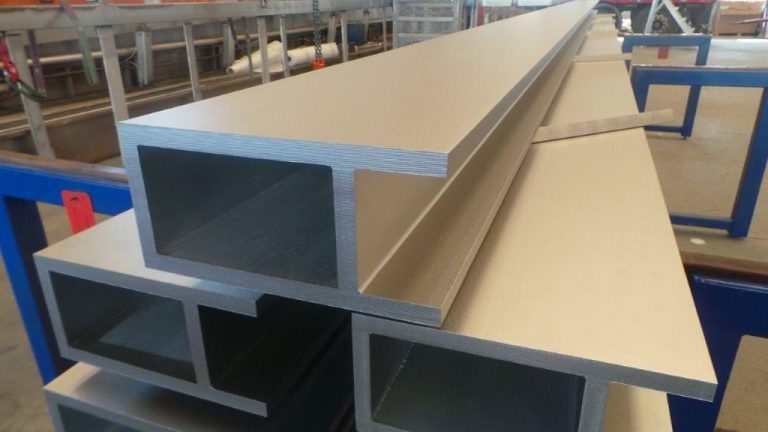How do mini robot vacuums work? A comprehensive guide for 2024
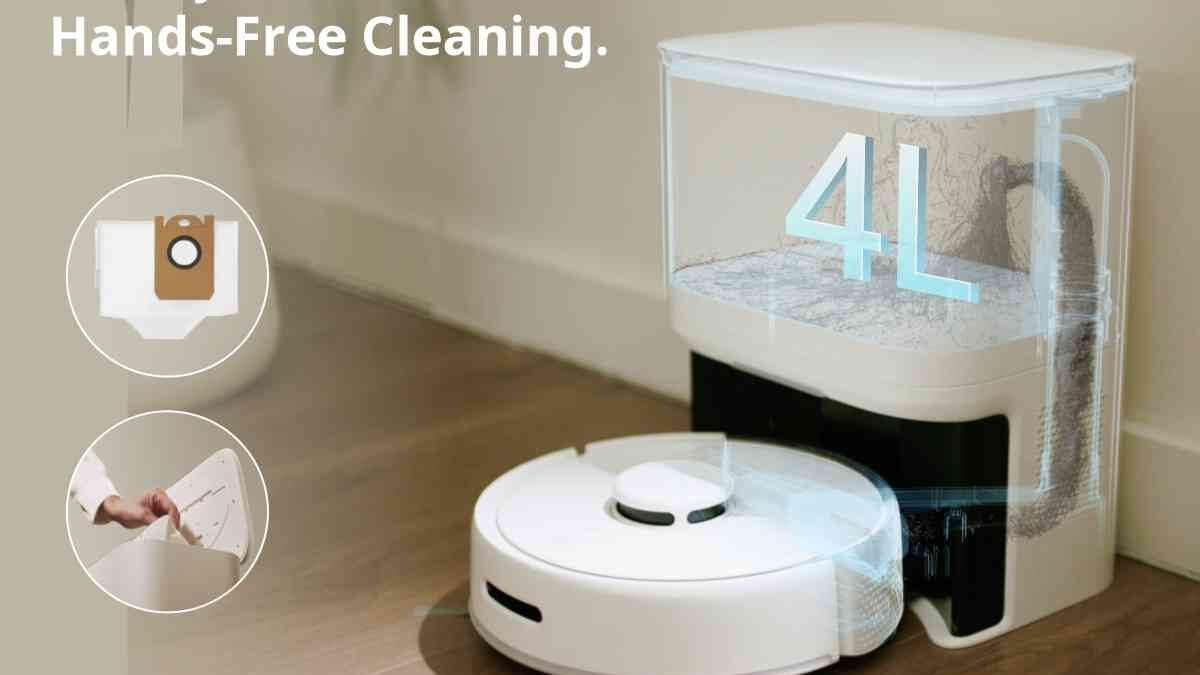
The popularity of mini robot vacuums has skyrocketed in recent years thanks to advancements in technology and their convenience. For potential buyers and tech enthusiasts alike, it’s essential to understand the components and cleaning mechanisms that make these independent cleaning machines function efficiently. This comprehensive guide takes an in-depth look into the anatomy and “brain” of mini robot vacuums.
What is a mini robot vacuum?
A mini robot vacuum is an autonomous cleaning device designed for hard floor surfaces and low-pile carpets. Typically round or disc-shaped, these compact vacuums are small enough to roll under beds, sofas, and other tight spaces. They utilize sensors, programmed algorithms, battery power, and brushrolls to mechanically suck up dirt and debris as they maneuver through space.
There are many types of mini robot vacuums to suit different needs and budgets. Basic, affordable models focus solely on vacuuming. Mid-range options add conveniences like WiFi, app control, specific cleaning modes, and smart home compatibility. High-end versions may incorporate advanced mapping, increased suction power, self-emptying dustbins, room recognition, and customized cleaning schedules.
The evolution of home cleaning and the rise of mini robot vacuums.
Traditional full-size vacuum cleaners have been the cleaning staple in households for decades. However, hauling them out, plugging them in, pushing them from room to room, and struggling with cords proved inconvenient and laborious. As technology continued to evolve, robotic vacuums emerged as an innovative solution. These small but mighty machines had limited functionality and battery life initially. But as engineering and navigation systems improved over time, so did their capabilities.
Today, mini robot vacuums are a new addition to home cleaning, offering smart features that may soon catch on with more households. Their compact size allows them to clean under and around furniture that bulky vacuums cannot. With conveniences like WiFi connectivity, app control, and smart home integration, they clean independently and require minimal effort from owners. For small spaces like apartments or offices, mini robot vacuums offer a practical way to keep floors spotless.
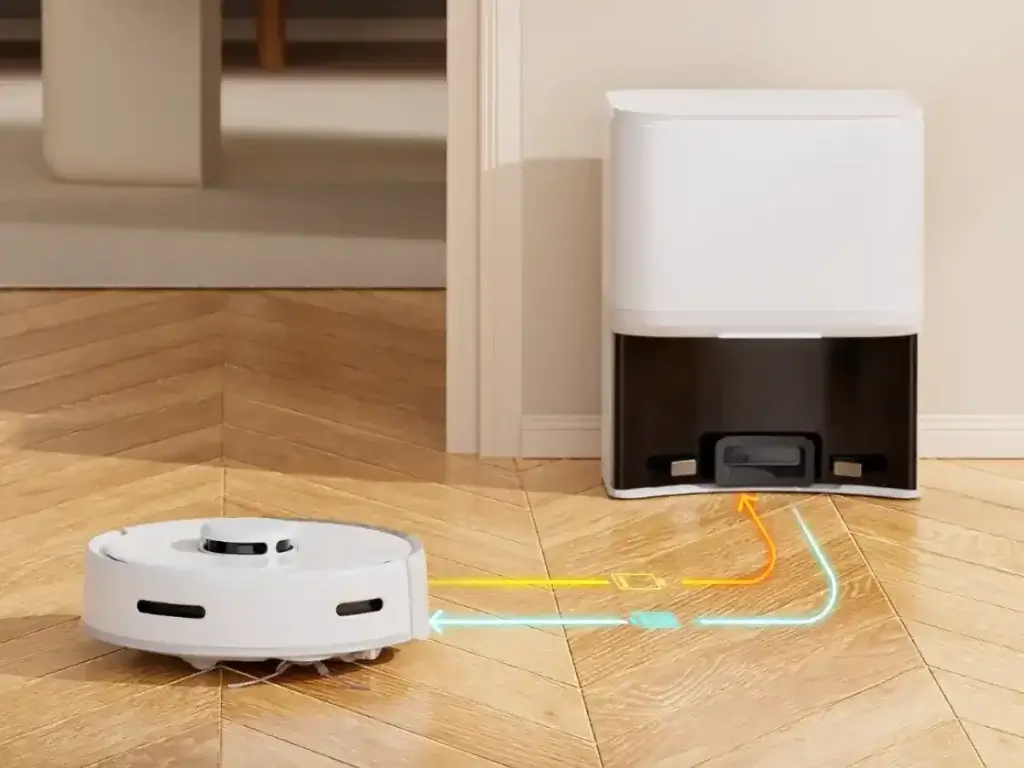
The anatomy behind the automation.
Though small in stature, mini robot vacuums are complex devices that use an integrated system of hardware and software to function.
The “brains” are the processors and sensors that control navigation and operation. Mini robot vacuums have two main onboard chips – a small general processor for basic functions and a more advanced processor dedicated to mapping and driving algorithms. Sensors play a vital role in environmental perception and autonomy. Infrared and proximity sensors detect edges and prevent falls. Acoustic sensors listen for increases in motor torque signaling issues like clogs or tangles. Additional smart sensors in upgraded models include laser imaging sensors for ultra-detailed spatial mapping.
The motor and wheels propel mini robot vacuums through a space. Brushrolls underneath use nylon bristles and silicone fins to actively sweep up debris, which then passes through vacuum air channels on the underside. This material moves into the dustbin for collection. Lithium-ion rechargeable battery packs power the whole system for a typical runtime ranging from 60 to 180 minutes depending on the model. The battery will automatically recharge itself, after which the unit resumes cleaning until completion.
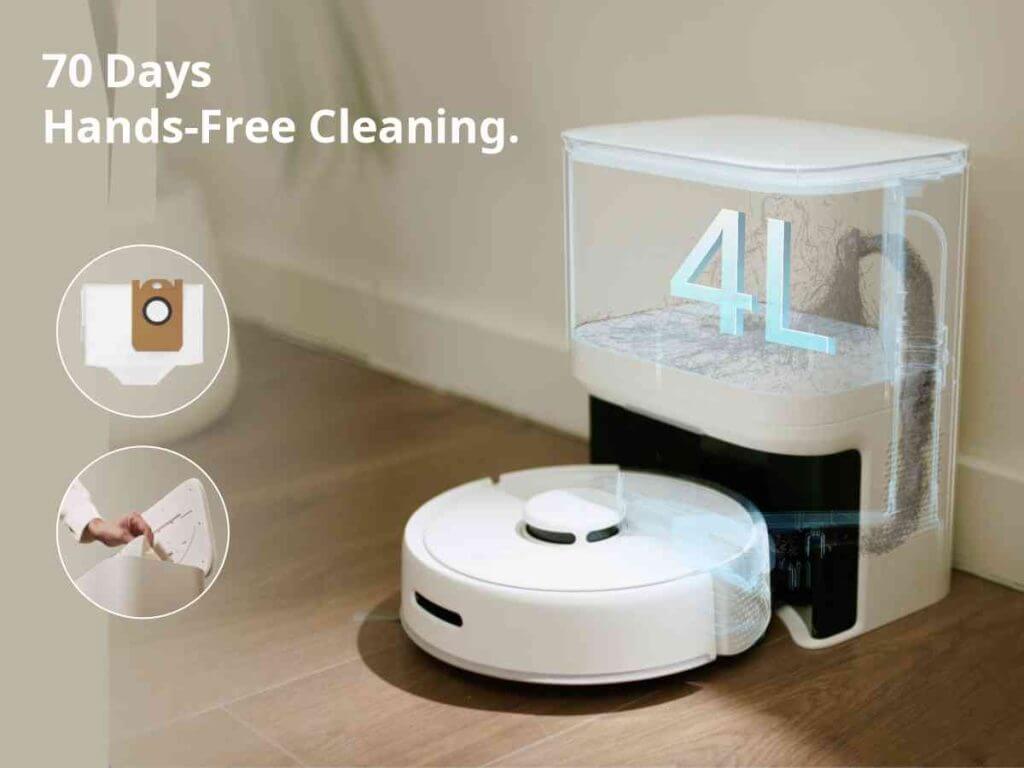
Sophisticated navigation takes the wheel.
What truly elevates mini robot vacuums is their ability to independently navigate and map spaces using sensor fusion technology. By processing environmental data from multiple sources, mini robot vacuums identify their location and chart efficient cleaning routes. Gyroscopic sensors monitor orientation changes as the unit pivots and rotates so it always knows what direction it’s facing. Dirt detection sensors identify particularly dusty areas in real-time to focus cleaning efforts where needed most. But the key lies in how different models create maps.
Basic mini robot vacuums use proximity sensors and wheel encoders to recognize obstacles and distances traveled. However, lacking persistent spatial awareness, these devices clean randomly in a general vicinity.
In contrast, advanced models perceive surroundings to form multi-level floorplan maps. Using simultaneous localization and mapping (SLAM) algorithms, mini robot vacuums construct maps based on lidar laser beams, optical flow tracking from navigation cameras, and images processed by vision sensor chips. With persistent maps as a reference, mini robot vacuums know where they are, where they’ve already cleaned and can resume incomplete jobs when batteries recharge.
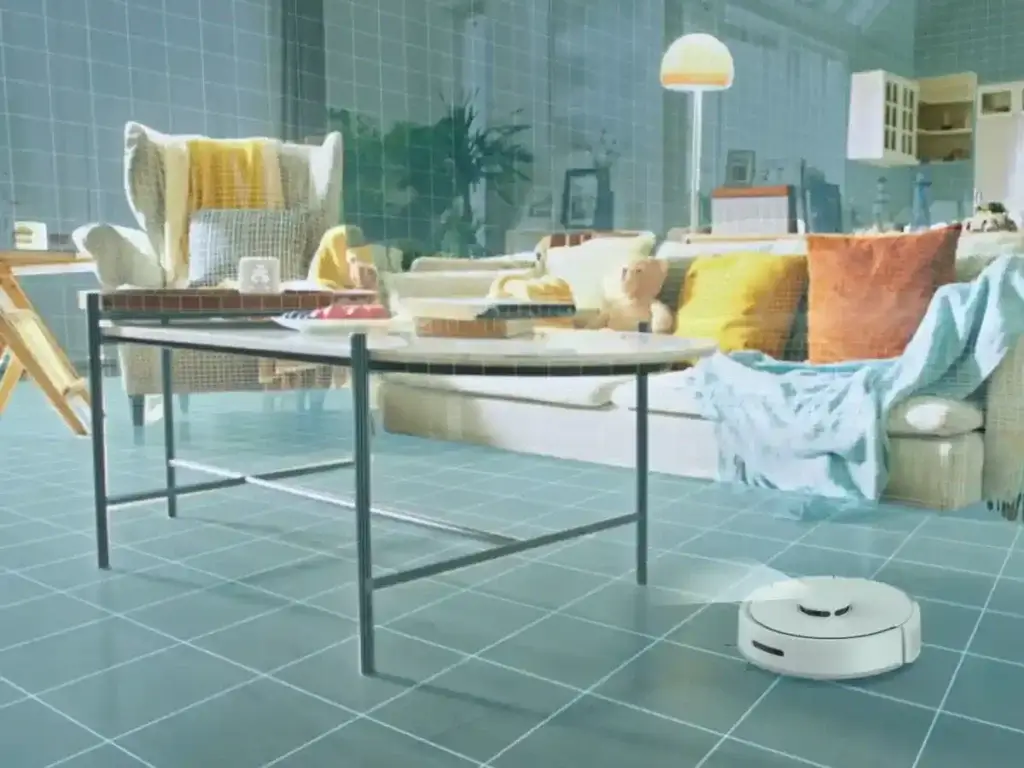
Extending run time through power management
Mini robot vacuums rely heavily on onboard batteries to independently roam and clean. Most entry-level models utilize 14.4V lithium-ion batteries, which provide 60-90 minutes of runtime – ample time for one or two small rooms.
Various power management strategies also help mini robot vacuums operate longer on a single charge:
- Room isolation allows units, once recognizing rooms via sensors, to methodically clean each separately without wasting energy crisscrossing between them.
- Path optimization minimizes wheel rotations through efficient routing thanks to SLAM mapping. Direct paths waste less power versus random trajectory models.
- Selective operation keeps energy-draining components like the brush roll and vacuum motor off when crossing carpets or mopping hard floors. Accessory ports on certain models accommodate interchangeable wet and dry cleaning modules.
In terms of lifetime, lithium-based batteries last 2000-3000 full cleaning cycles, which for most households equals 2-5 years of useful service. While built-in batteries cannot be replaced, entire units are designed for cost-efficient replacement every few years.
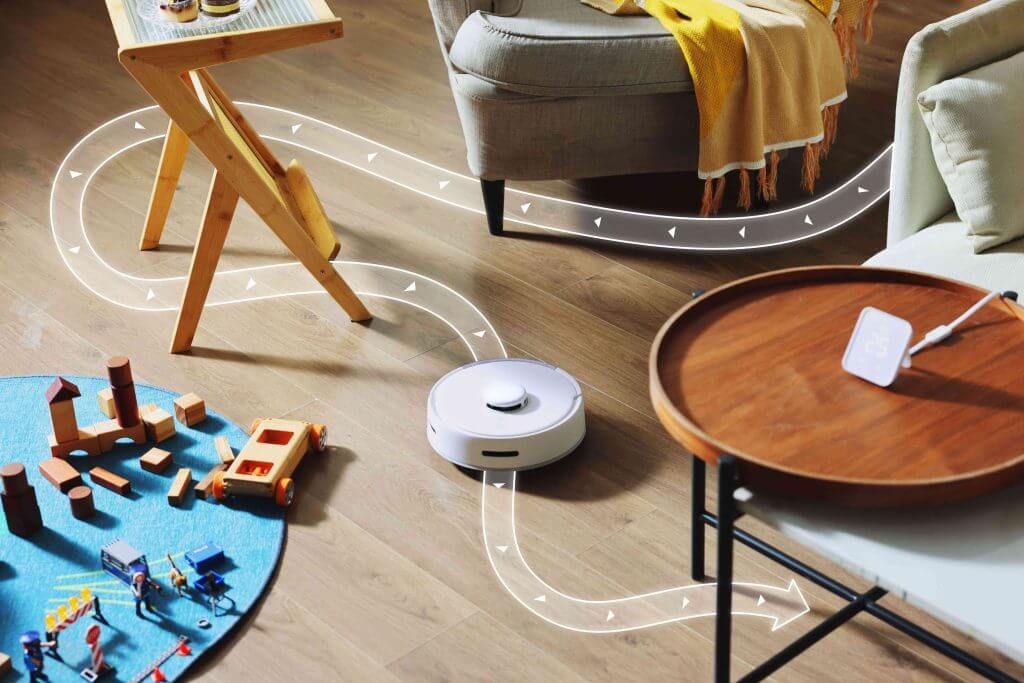
The cleaning science behind mini motors.
While mini in size, robot vacuums generate sufficient power to rid floors of dust, dirt, pet hair, crumbs, and small debris. Central to their cleaning competence are optimized airflow paths and multi-surface brushes.
Unlike upright or canister models, mini robot vacuums sweep and vacuum simultaneously. Nylon brushrolls loosen and dislodge fine dust and particles from cracks and crevices, which then get sucked into the internal duct system continuously. The brushes auto-adjust to different floor types and surface debris detected by motor encoders and current sensors. Multi-surface rubber brushes provide better traction and dust pickup on hard floors, while anti-tangle combs prevent clogs from hair wrap on carpets.
Centrifugal fans and filters keep air moving optimally through the tightly packed dustbin and motor system. Cyclonic chambers spin air at high velocities to separate dust from air for cleaner exhaust and better airflow. High-efficiency filters use interleaved pleats with small porous holes to trap microscopic particles, preventing them from escaping back into the home environment during operation or bin emptying.
Some mini robot vacuums actually boost suction power automatically when extra vacuuming strength is needed, like for stubborn pet hair or along edges. Cyclone motors and brushrolls may briefly switch into maximum overdrive, reaching boost suction levels over 5 times their standard rating.
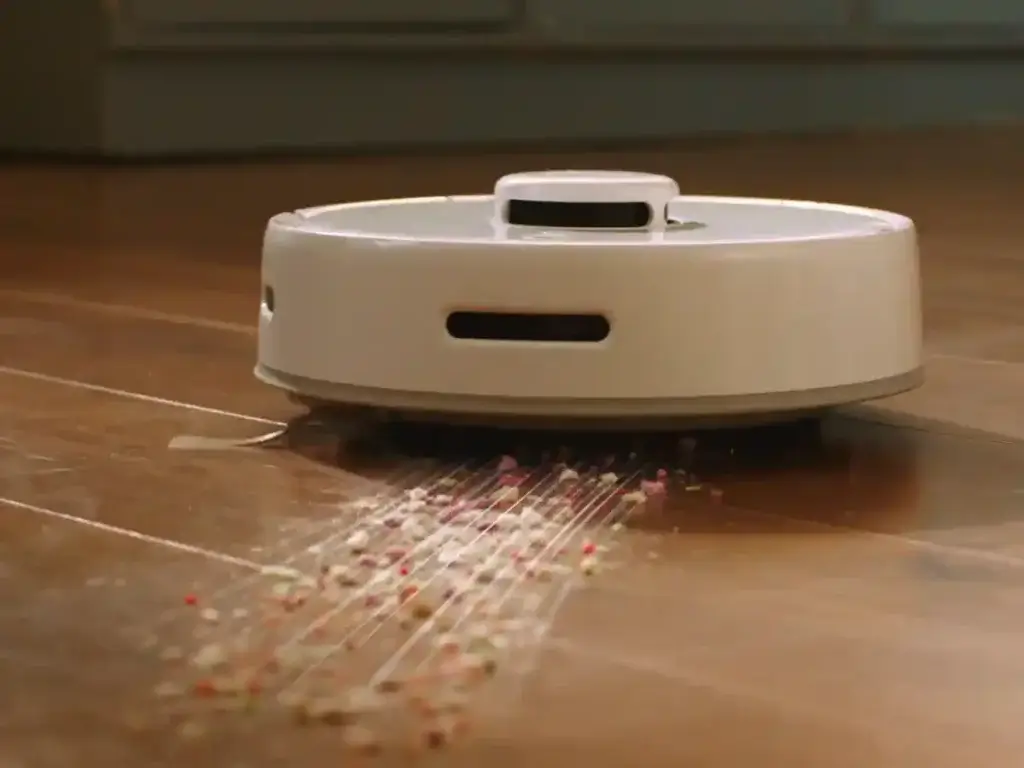
Smart features for next-level convenience.
With integrated Wi-Fi and app connectivity, mini robot vacuums transform into customizable cleaning appliances tailorable to owners’ homes and lifestyles. Apps allow remote activation, monitoring of real-time cleaning progress, specifying target areas, scheduling vacuuming for select days and times, and more.
Home intelligence platforms like Amazon Alexa or Google Assistant provide hands-free voice control for these mini helpers. Virtual boundaries created in apps keep robot vacuums away from unsafe zones like pooled water or unprotected ledges. No-go lines can also restrict access to pet bowls or baby gates. Custom cleaning routines based on room, day of the week, and time of day enable owners to dictate when spaces get attention.
Some premium models auto transport themselves to charge stations and then resume incomplete jobs until floors are fully clean. A few experimental robots even empty their own dustbins at charging bases – a major step towards fully autonomous floor cleaning.
Maintenance tips for performance and longevity.
Like any home appliance, mini robot vacuums require simple, regular maintenance for optimal operation over years of use. Here are handy tips owners should follow:
- Clean sensors and cameras with microfiber cloth to ensure navigation systems run accurately.
- Remove and wash filters monthly as they trap fine particulates that can impede suction over time if not cleaned.
- Use included tools to cut away strands of hair or fibers wrapped around brushrolls and wheels.
- Empty dustbins after each use to maintain vacuuming power and not spread collected dirt back onto floors.
- Wipe sensors, wheels, and contacts on charging stations with isopropyl alcohol every 3 months to clear oil buildup that prevents good electrical connections for charging.
Following the manufacturer’s maintenance schedule will ensure mini robot vacuums run smoothly for the long haul. Replacement filters and brush rolls can improve vacuuming if the original components become overly worn.
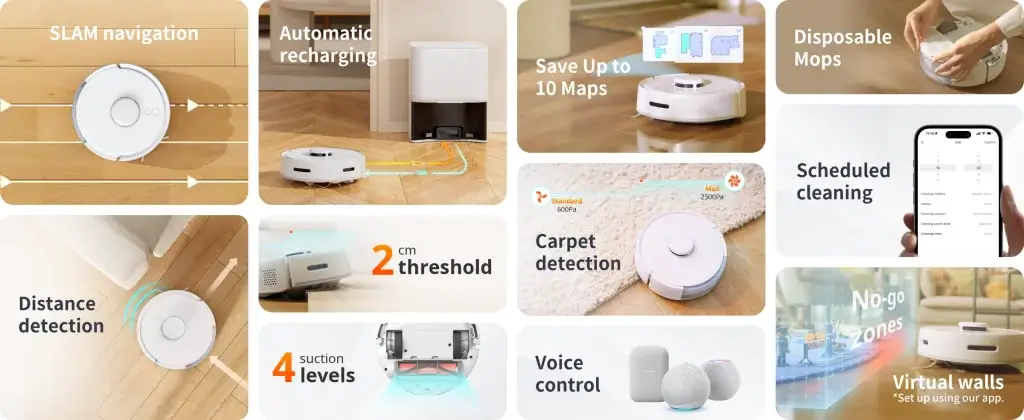
Choosing your ideal robot cleaning companion.
When selecting a mini robot vacuum, the SwitchBot Mini Robot Vacuum K10+ stands out for its ultra-compact size and cleaning power. With a diameter of just 24.8 cm and a height of 9.2 cm, the K10+ navigates tight spaces other vacuums cannot access.
Despite its small stature, the K10+ delivers robust cleaning for apartments and small homes thanks to strong suction and sweeping brushes. For added home automation fun, the K10+ integrates with other SwitchBot devices like smart locks, contact sensors, cameras, and hubs. Build custom routines to start vacuum cleaning when residents leave the house or finish when they return. Control the K10+ remotely from the smartphone app anywhere the internet exists.
The clever little K10+ punches above its weight, delivering convenience and cleaning power comparable to models double the cost. Compact size with full functionality makes the SwitchBot Mini Robot Vacuum K10+ the ideal robotic cleaning companion.
The future of automated floor care.
Engineers continue innovating mini robot vacuums as the demand for autonomous home cleaning rises. With seniors looking to age in place longer and busy homeowners seeking labor-saving solutions, technology answers the call.
Expect leaps forward in AI, customization, human-machine interaction, and sustainability from mini robot vacuums in the coming years. Soon, these little helpers will load their own dustbins, respond to voice commands, send owners cleaning insights, and fill service gaps when traditional vacuums tire out – perhaps even passing the TV remote after a long day!
Read More
- The story behind the world’s smallest robot vacuum, K10+.
- Live in an apartment? This robot vacuum is everything you need and more.
- Currently on Kickstarter|The first plumbing connected 100% automated floor cleaning robot.
- Endlich! SwitchBot Remote kann als Auslöser für in unserer App erstellte Szenen verwendet werden.
- Smart home|How to start your smart home
10 reasons why a mini robot vacuum is perfect for your apartment
SwitchBot Scenes 3.0 is here, and there’s a lot you need to know.

